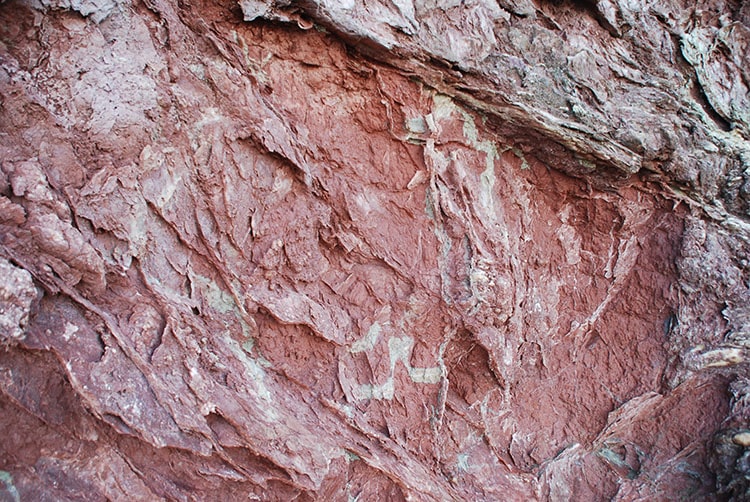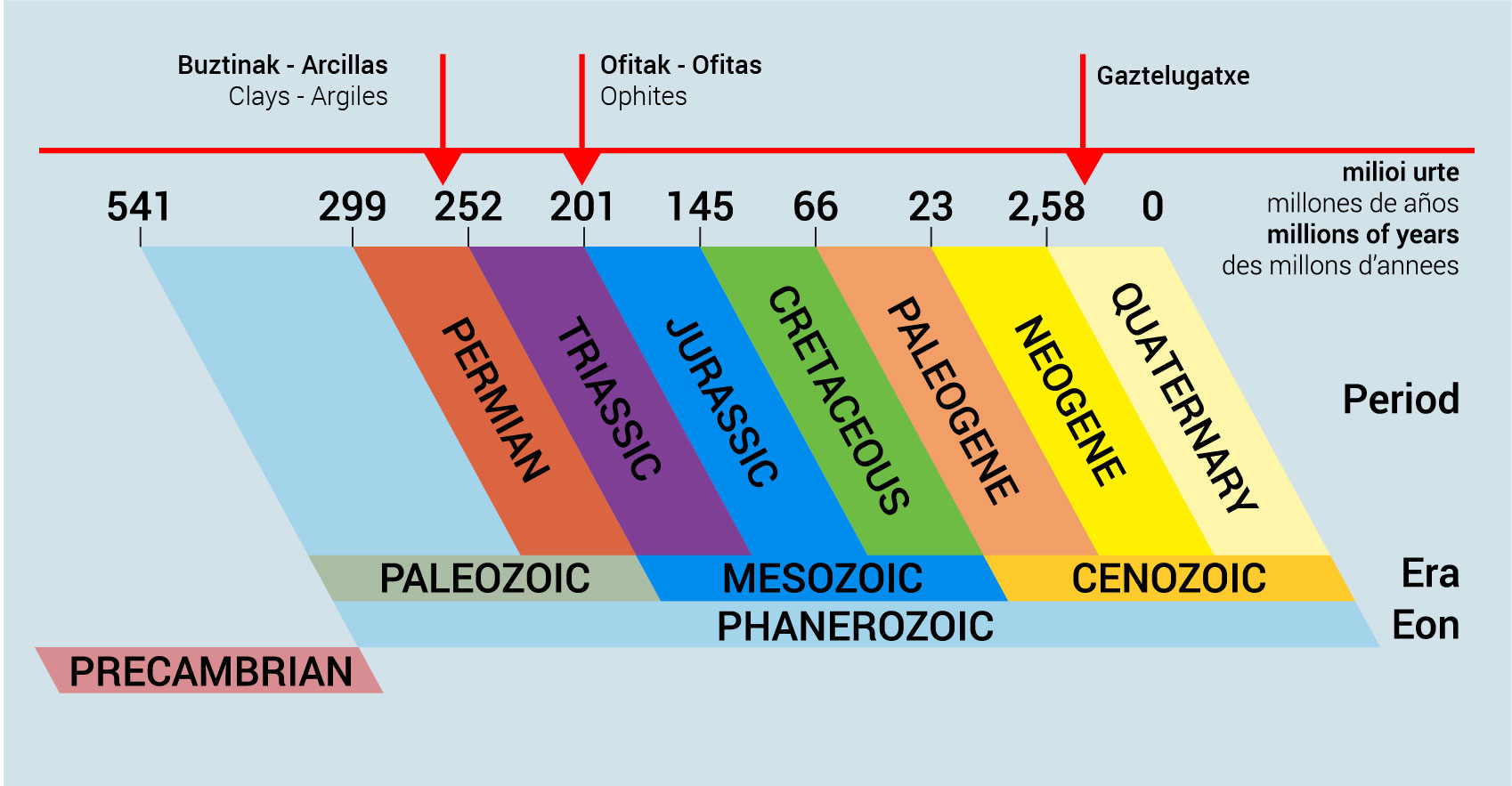BAKIO
A DIAPIR IN BAKIO
CLAY AND OPHITES
Have you ever heard of a diapir? A diapir is a geological phenomenon where some more flexible and less dense materials make their way into more dense and modern materials.
The main sign of a diapir in Bakio is the clay and olphites that can be seen to the east of the beach. In the Triassic period, 260 million years ago, the ocean that covered our territory receded and formed lagoons of salt water that would evaporate and eventually leave deposits of clay, salt and gypsum. The olphites, that have a volcanic origin, emerged 200 million years later in the form of magma as a result of the fragmentation of Pangaea. Much later, between 80 and 15 million years ago, because of its flexibility and low density the clay started to ascend, dragging the olphites along with it.
These rocks can be recognised by their colour. The clay, which generally reddish, has veins filled with gypsum. And the olphites, which are green, form small islands. They are the oldest materials that can be found in the Flysch Route.
DID YOU KNOW... Olphites were also used in rural areas as “esne harriak” - milkstones - because of their calorific power. In the old days, the stones were heated in a fire and put into a kaiku (wooden pitcher) full of milk to make quark.


